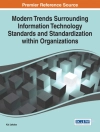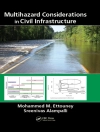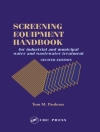- Discusses latest research on sorghum structure, chemistry and physiology
- Reviews varied uses of sorghum as a feed and food grain, forage and energy crop
- Includes case studies of key challenges facing sorghum cultivation in regions such as Asia, Africa and South America
Inhoudsopgave
Part 1 Sorghum utilization
1.Structure and chemistry of sorghum grain: S. R. Bean, B. P. Ioerger , J. D. Wilson , M. Tilley , D. Rhodes and T. J. Herald , USDA-ARS, USA;
2.The domestication, spread and uses of sorghum as a crop: F. M. Shapter, A. Crowther, G. Fox, I. D. Godwin and L. Watson-Fox, University of Queensland, Australia; I. J. C. Hannah, AGR Industries, Australia; and S. L. Norton, Agriculture Victoria, Australia;
3.Growth, development and physiology of grain sorghum: M. Djanaguiraman, P. V. V. Prasad and I. A. Ciampitti, Kansas State University, USA;
4.Sorghum as a food grain: Barbara J. Stoecker, Oklahoma State University, USA; Kebede Abegaz, Hawassa University, Ethiopia; and Yewelsew Abebe, Alive and Thrive, Ethiopia;
5.Sorghum as a forage and energy crop: Scott Staggenborg and Hui Shen, Chromatin Inc., USA;
Part 2 Sorghum production and improvement across the world
6.Introducing new technologies and market strategies for sorghum producers in developing countries: the Sahel case: John H. Sanders, Purdue University, USA; Botorou Ouendeba, former Director of the 3N Program, Niger; Ababacar Ndoye, former Director of the Institute of Food Technology, Senegal; and Niaba Témé, Institute of the Agricultural Economy (IER), Mali;
7.Improving sorghum cultivation in South America: Rafael Augusto da Costa Parrella, Robert Eugene Schaffert, Cicero Bezerra de Menezes, José Avelino Santos Rodrigues, Jurandir Vieira Magalhães, Cynthia Maria Borges Damasceno, Dagma Dionísia da Silva and Simone Martins Mendes, Embrapa Milho e Sorgo, Brazil;
8.Improving production and utilization of sorghum in Asia: Aruna C., B. Dayakar Rao, Vilas A. Tonapi and T. G. Nageshwar Rao, Indian Institute of Millets Research, India;
9.Sorghum cultivation and improvement in West and Central Africa: E. Weltzien and H. F. W. Rattunde, University of Wisconsin-Madison, USA, formerly International Crop Research Institute for the Semi-Arid Tropics (ICRISAT), Mali; T. A. van Mourik, International Potato Center, Ghana; and H. A. Ajeigbe, International Crop Research Institute for the Semi-Arid Tropics (ICRISAT), Nigeria;
Over de auteur
Professor Glen Fox is the Anheuser-Busch Endowed Professor of Malting and Brewing Science at the University of California, USA. Previously, he was a Senior Fellow at the University of Queensland, Australia. He has many years experience working with barley breeding programmes, and malting and brewing industries in Australia and overseas. With these companies, his worked focused on the influence of barley quality on malting and brewing quality. He is a Fellow of the Institute of Brewing and Distilling. Professor Fox has over 250 book chapters, journal articles and conference presentations. He has also supervised over 50 post-graduates students mostly in the area of barley and malt quality. His current research interests include digger deeper into barley, malt, wort composition on beer quality.












